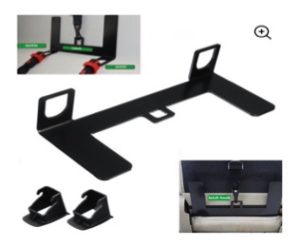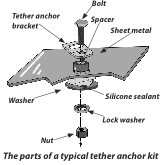
Topic: LATCH
Study Examines NHTSA’s CR Ease-of-Use Ratings
Besides regulating vehicles and CRs through Federal Motor Vehicle Safety Standards, NHTSA also influences roadway safety through its various ratings programs, which can be found here.
Read More from “Study Examines NHTSA’s CR Ease-of-Use Ratings”2023-2024 LATCH Manual Update
2021-2022 LATCH Manual Update
2021-2022 LATCH Manual Update
2021-2022 LATCH Manual Update
Warning: Aftermarket LATCH = Fake LATCH

Fake CPS products are not limited to counterfeit CRs. The online availability of aftermarket LATCH systems is also a growing problem posing a danger to children. Multiple sellers are offering systems to add to CRs (LA attachment straps with connectors), as well as systems for vehicles (plates with LAs and TAs). When it comes to these aftermarket parts, no extra sleuthing is needed to conclude that they are unsafe: LATCH hardware should only be acquired directly from a vehicle or CR manufacturer. Read More from “Warning: Aftermarket LATCH = Fake LATCH”
LATCH-Related CR Recalls —ARCHIVE
Excerpted from the 2015 LATCH Manual
The following LATCH-related child restraint recalls are excerpted from the 2015 LATCH Manual* and include only those CR recalls and consumer advisories that affect CRs that are expired as of January 2017. They were omitted from the 2017 and newer LATCH Manuals because the publisher does not want to imply that users should continue to use expired child restraints.
Retrofitting Tether Anchors
Still a Benefit to Child Safety
In preparation for the 2017 LATCH Manual*, SRN reviewed and updated the status of various aspects of retrofitting vehicles with tether anchors (TAs), leading to the following update report.
Read More from “Retrofitting Tether Anchors”
History of Tethers and LATCH
This information is excerpted from the 2015 LATCH Manual.
The story of tethers begins long before the introduction of LATCH. Tethers were used on forward-facing child restraints (CRs) in the United States, Canada, and Australia as early as 1970. They have been required equipment for all forward-facing CRs made since 1974 in Australia and since 1980 in Canada. In the U.S., however, though tethers were featured on some early CRs, they weren’t required. The challenges caregivers faced if they tried to retrofit their vehicles with tether anchors (TAs) led to very low levels of tether use, and tethers were eventually phased out of nearly all U.S. CR models by the mid-1980s.



